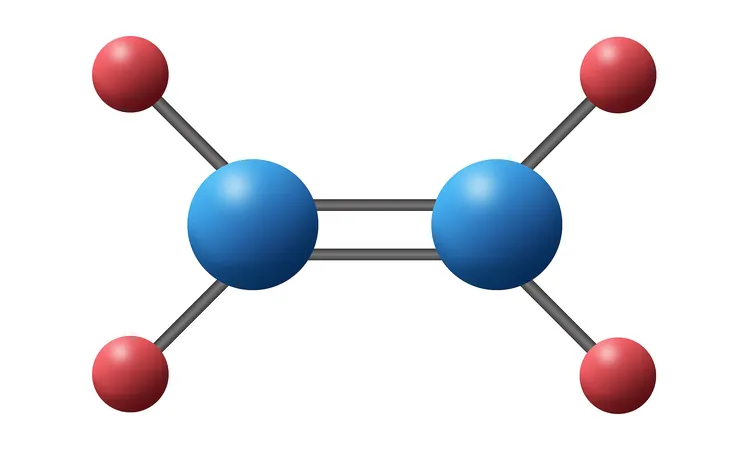
Historic Chemistry Rule Overturned: Is Your Textbook Outdated?
2024-11-08
Author: Jessica Wong
Historic Chemistry Rule Overturned: Is Your Textbook Outdated?
In a groundbreaking discovery that challenges a century-old principle in organic chemistry, a team of scientists led by UCLA's Neil Garg is shaking the very foundations of the discipline. This development has major implications for academic textbooks and could signal a new era in molecular research.
For over a hundred years, Bredt's rule has been a cornerstone of organic chemistry, asserting that a double bond cannot exist at the bridgehead position of small bridged ring systems. This rule has been accepted as truth since it was formulated in 1924, but Garg’s recent study published in Science opens the door to a new understanding that puts this long-held belief into question.
What Is Bredt’s Rule?
Bredt's rule posits that in small bridged ring molecules—structures resembling two rings sharing some atoms—a double bond is too strained to exist at the bridgehead position. The spatial configuration of these molecules causes a disruption in bond angles, making the structure unstable. To visualize this, think of trying to fold a rigid stick into a loop; the inherent tension prevents it from taking that shape.
The Disruptive Discovery
Garg's team sought to challenge the limitations imposed by Bredt's rule by successfully creating what they call anti-Bredt olefins (ABOs). These novel compounds do the seemingly impossible by featuring a double bond in a position previously thought to be too strained for stability.
In their innovative approach, the researchers reacted specific molecules known as silyl (pseudo)halides with a fluoride source to generate these elusive ABOs. However, these compounds are highly unstable and can decompose rapidly. To study them, the researchers employed a trapping agent to capture these fleeting molecules long enough to analyze their properties and potential applications.
The Promise of Anti-Bredt Olefins
The existence of ABOs defies the established understanding of chemically stable structures and offers insights into strained molecules that could revolutionize material science and organic synthesis. By demonstrating that these compounds can be created and utilized, Garg's work may lead to new avenues in drug discovery and the development of novel medications.
As the pharmaceutical industry seeks to explore three-dimensional molecular structures, the ability to generate ABOs could open doors to previously unexplored compounds that hold potential for curing diseases.
Rethinking Chemistry
Garg’s research challenges not just Bredt’s rule, but also encourages the broader scientific community to reassess other entrenched beliefs. “Rules like these should be viewed as guidelines, not barriers to creativity,” he states. His work illustrates the importance of having a mindset that embraces flexibility and innovation in science.
For aspiring chemists and researchers, this discovery acts as a clarion call to question existing paradigms. If a principle held for a century can be overturned, the possibilities for future breakthroughs are vast.
What Lies Ahead?
This landmark finding paves the way for extensive exploration within the field of organic chemistry and beyond. Garg's team has laid the groundwork for further research into the implications of ABOs in various scientific applications.
So, the next time you find yourself confronted with a constraint labeled "impossible," remember that challenging the status quo might just lead to the most revolutionary progress in science. The ongoing evolution of chemistry has just gained a fresh perspective—and the journey is only beginning.
Stay tuned for more developments in this exciting field that is constantly redefining what we know.



 Brasil (PT)
Brasil (PT)
 Canada (EN)
Canada (EN)
 Chile (ES)
Chile (ES)
 Česko (CS)
Česko (CS)
 대한민국 (KO)
대한민국 (KO)
 España (ES)
España (ES)
 France (FR)
France (FR)
 Hong Kong (EN)
Hong Kong (EN)
 Italia (IT)
Italia (IT)
 日本 (JA)
日本 (JA)
 Magyarország (HU)
Magyarország (HU)
 Norge (NO)
Norge (NO)
 Polska (PL)
Polska (PL)
 Schweiz (DE)
Schweiz (DE)
 Singapore (EN)
Singapore (EN)
 Sverige (SV)
Sverige (SV)
 Suomi (FI)
Suomi (FI)
 Türkiye (TR)
Türkiye (TR)
 الإمارات العربية المتحدة (AR)
الإمارات العربية المتحدة (AR)